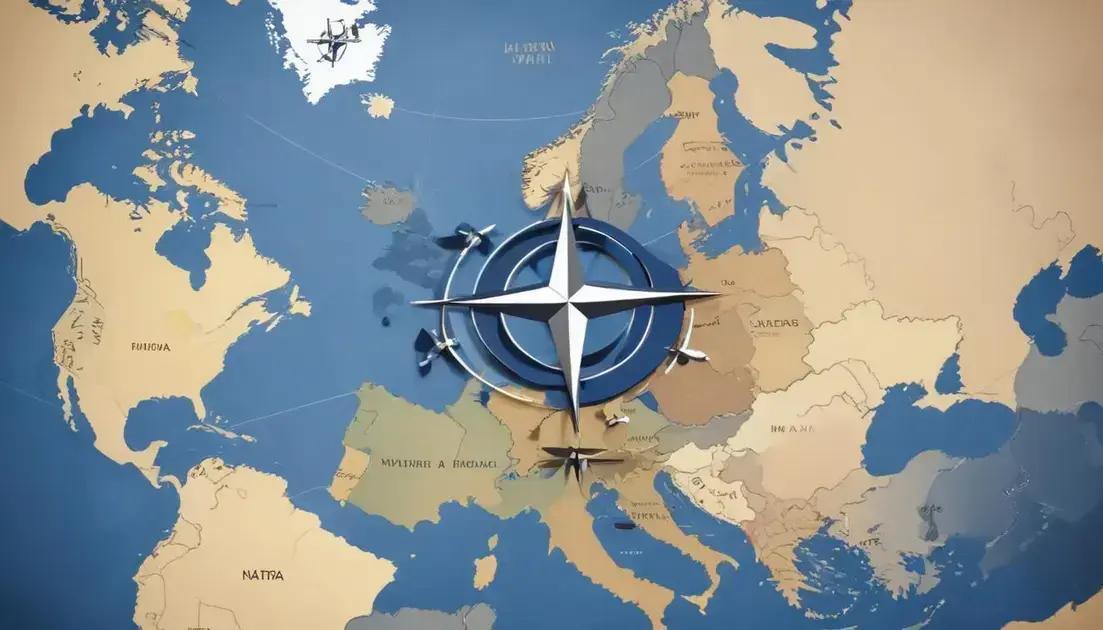
Paris Agreement: The Largest Global Climate Pact
The Paris Agreement is a crucial international treaty focused on combating climate change by setting targets to limit global warming. Adopted in 2015, it encourages nations to create their own climate goals, promote renewable energy, and provide financial support to developing countries. The agreement fosters global cooperation while addressing challenges such as financial funding, political will, and public awareness. Through collaborative efforts, countries aim for a sustainable future and a healthier planet for future generations.
The Climate Agreement represents a monumental step towards global cooperation in battling climate change. Have you ever wondered how nations unite for a cause like this?
Introduction to the Paris Agreement
The Paris Agreement is a vital treaty aimed at tackling climate change. It was adopted in 2015 and has been signed by 195 countries. The main goal is to limit global warming to well below 2 degrees Celsius. This is important to prevent severe climate impacts that can harm our planet.
One key feature of the agreement is that each country sets its own climate goals, known as “nationally determined contributions” (NDCs). This allows nations to tailor their actions based on their needs and capabilities. By coming together, countries share ideas and strategies, making the fight against climate change a collective effort.
Another vital aspect is transparency. Countries must report their progress regularly. This helps build trust and shows how each nation is contributing to the overall goal. It keeps everyone accountable and encourages more ambitious actions over time.
Climate finance is also a crucial part of the agreement. Wealthy nations pledged to support developing countries in their climate efforts. This support can come in the form of technology, funding, and resources. It’s a way to ensure that everyone is on board, no matter their economic situation.
The Paris Agreement represents hope for future generations. By working together, we can create a more sustainable world and protect our planet from the effects of climate change. It’s about taking action now for a better tomorrow.
Key Goals of the Agreement
The Paris Agreement has several key goals that aim to protect our planet. The main goal is to keep global warming below 2 degrees Celsius. This is vital for minimizing the impacts of climate change.
Another goal is to strive for a limit of 1.5 degrees Celsius. This ambitious target is important for reducing risks linked to climate change. To achieve this, countries need to take bold actions.
Each country sets its own climate targets, called nationally determined contributions (NDCs). This allows them to focus on what works best for their situation. Countries are encouraged to update their targets every five years. This ensures their actions remain ambitious and relevant.
Financial support is also crucial. Wealthier nations promised to help developing countries with funding. This ensures that all nations can take part in the fight against climate change, no matter their economic status.
Lastly, the agreement emphasizes the need for adaptation efforts. Countries must prepare for the impacts of climate change. This means investing in infrastructure and technology that can withstand extreme weather events.
Impact on Global Climate Policies
The Paris Agreement has a major impact on global climate policies. It encourages countries to enhance their efforts against climate change. By working together, nations can create stronger, more effective laws.
Since the agreement, many countries have set more ambitious climate goals. They aim to reduce greenhouse gas emissions at a faster pace. This helps to limit warming and protect the planet.
Another effect is the rise of renewable energy sources. Nations are investing in solar, wind, and other clean energies. This shift is not only good for the environment but also creates new jobs.
Furthermore, the agreement promotes innovation. Countries are sharing technology and ideas about reducing emissions. This exchange speeds up the transition to a sustainable future.
Local governments also feel the impact. Many cities are adopting their own climate action plans. They are aligning their goals with the Paris Agreement, helping communities become greener.
Lastly, global cooperation has increased. Countries now recognize climate change as a shared challenge. The agreement fosters collaboration, leading to more effective responses at all levels.
Challenges Ahead
Despite the progress made by the Paris Agreement, several challenges lie ahead. One major challenge is the gap between goals and reality. Many countries struggle to meet their climate targets. This makes it harder to limit global warming.
Another challenge is financial support. Developing nations often lack the funds to implement clean energy solutions. The promised financial aid from wealthier countries has not always been sufficient.
Political will is also vital. Changes in government can affect climate policies. Leadership committed to addressing climate change is essential for progress.
Public awareness and understanding need improvement too. Many people are unaware of how their actions impact the environment. Better education on climate issues can encourage individuals to take part in the solution.
Finally, climate change itself poses a challenge. Extreme weather events are becoming more frequent. These changes can disrupt efforts and require quick adaptations. Countries must be ready to respond effectively to these new realities.
The Role of Nations in Combatting Climate Change
All nations play a vital role in combatting climate change under the Paris Agreement. Each country must take responsibility for its own greenhouse gas emissions. This means setting and meeting their climate goals.
Collaboration is key. Countries need to share technologies and strategies for reducing emissions. When nations work together, they can achieve more significant impacts.
Wealthier nations have a special role. They should support developing countries with funding and resources. This support helps those nations transition to clean energy technologies.
Local governments also contribute. Many cities have adopted their own climate plans that align with national goals. These local efforts can drive change in communities and improve public awareness.
Public engagement matters too. Governments should involve citizens in climate actions. This can help people understand how their choices affect the environment. Education is critical in creating a more informed society.
Conclusion
In conclusion, the Paris Agreement marks a crucial step in the fight against climate change. By setting clear goals and encouraging cooperation, nations are working together for a healthier planet. Each country has a role to play, from setting emission targets to sharing resources.
Public awareness and local actions are just as important. When communities understand their impact, they can take meaningful steps toward sustainability. Together, these efforts create a powerful force against climate change.
As we move forward, it’s essential for every nation to commit to these goals. The challenges may be great, but the benefits of a cleaner, safer world are worth it. Let’s continue to support one another in creating a brighter future for generations to come.


